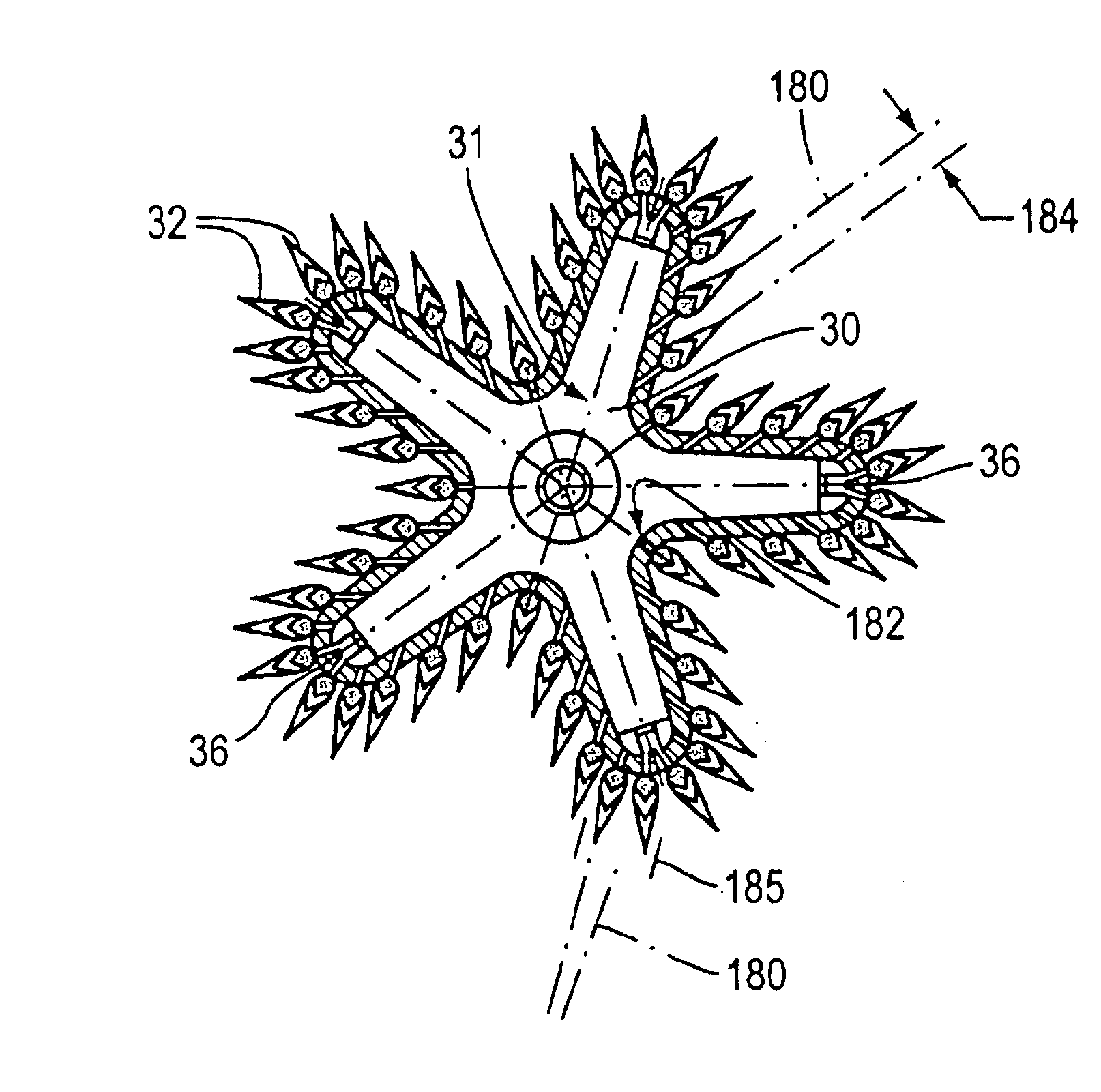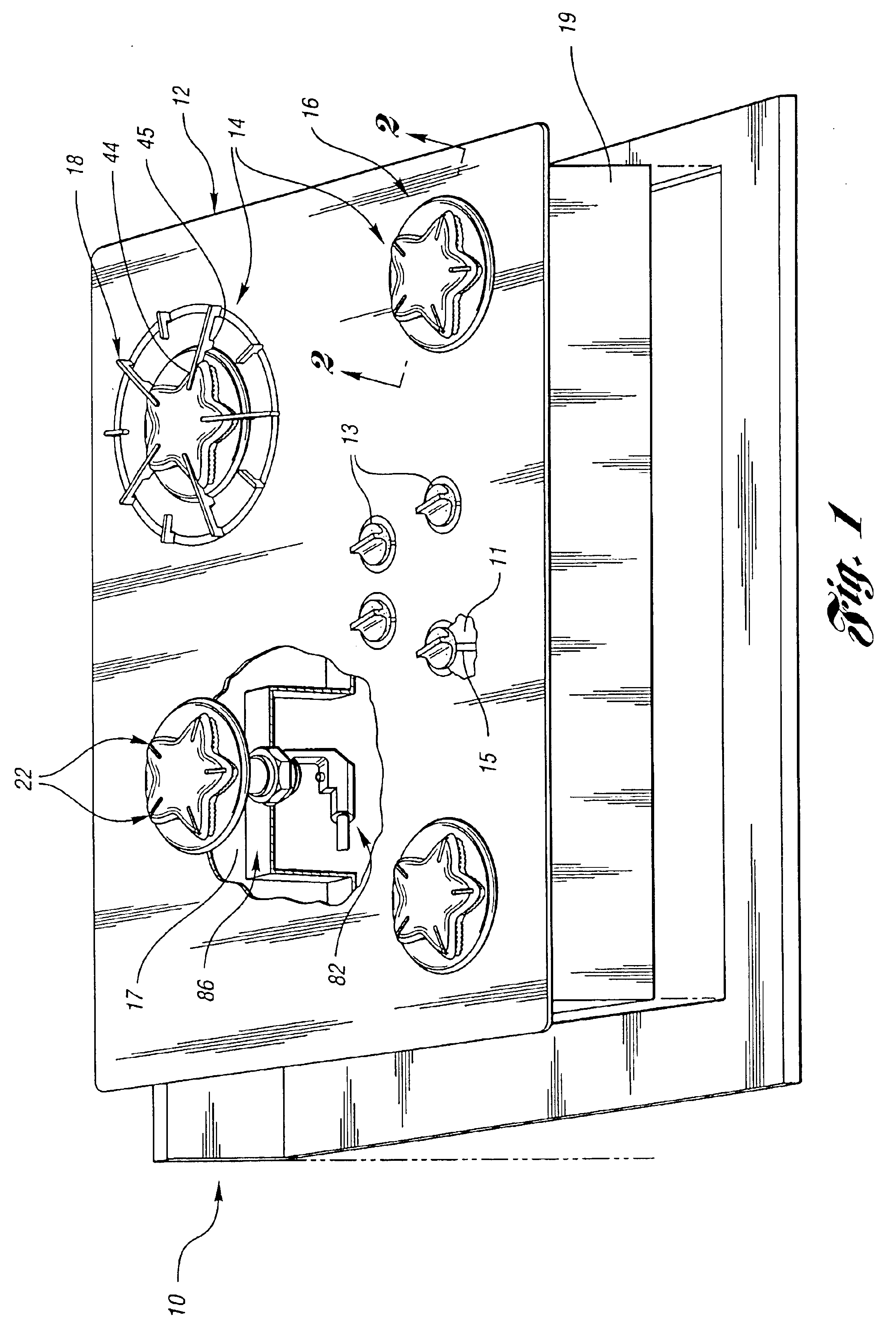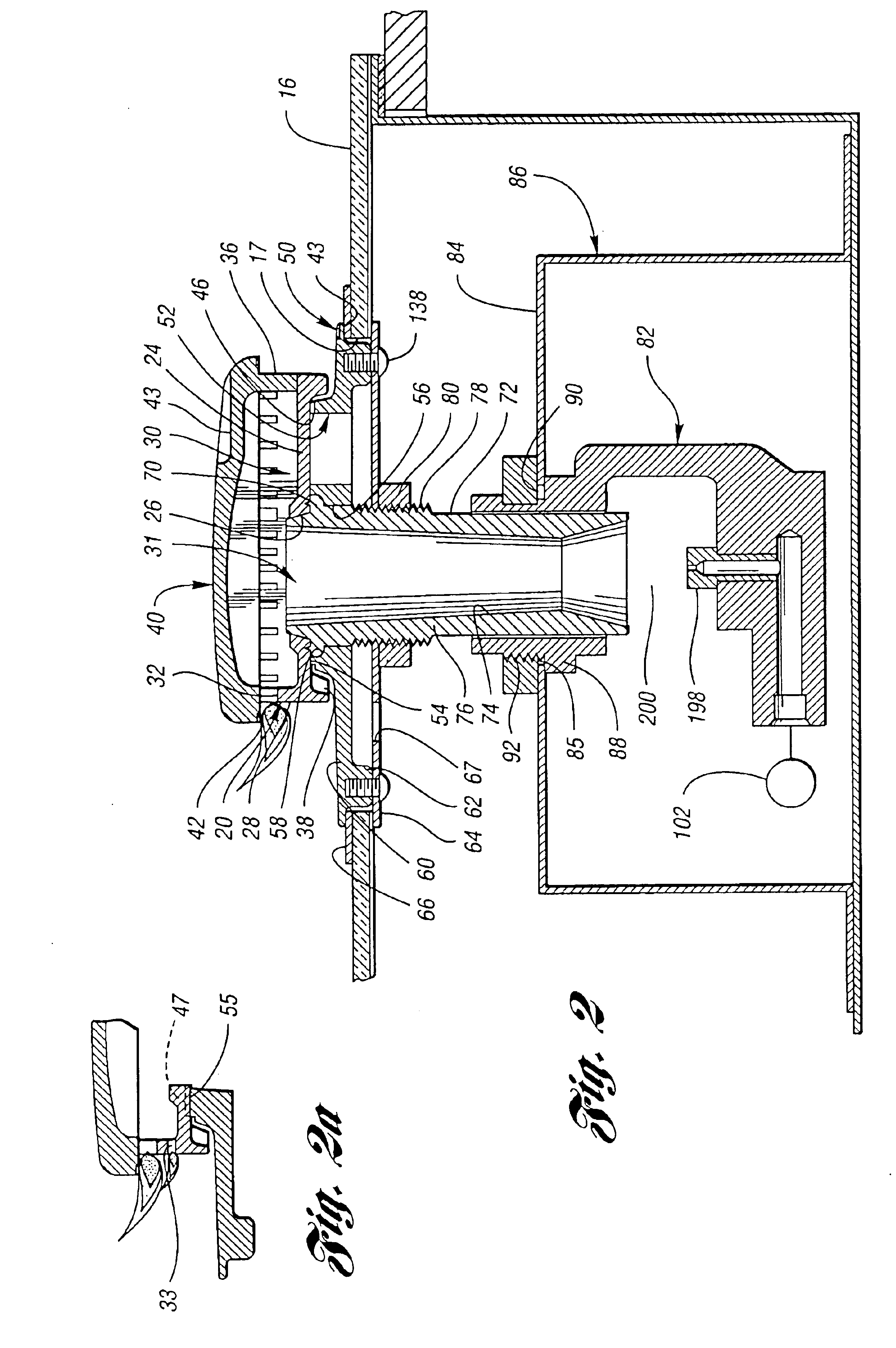Burner with piloting ports
a burner and piloting technology, applied in the field of cooking appliances, can solve the problems of limited range of gas flow rate, non-standard control of stability, and limited flame kernel, so as to improve the turn down ratio and cooking efficiency, and improve the stability of flame kernels
- Summary
- Abstract
- Description
- Claims
- Application Information
AI Technical Summary
Benefits of technology
Problems solved by technology
Method used
Image
Examples
Embodiment Construction
)
Referring first to FIG. 1, a cooking appliance 10 is shown having a cooktop 12 including a plurality of burners 14. The cooktop 12 includes surface panel 16 having a plurality of openings 17 defining the positions for each of the burners 14. Each burner supports a grate 18 to support a cooking utensil, such as a pot, pan or kettle over the burner. In the preferred embodiment, the surface panel 16 forms a sealed burner arrangement which is to be discussed in greater detail below. Nevertheless, the present invention is not limited to that context, and may also be employed with “open” burner arrangements that do not seal to a cooktop surface. In addition, control knobs 13 are carried on valve stems 15 protruding through openings 11 in the cooktop 12. The control knobs 13 are used to control the burner operation including the valve for controlling the flow of gas to the burner, and preferably, to also control the ignition of the burner in a well known manner, for example, as disclosed ...
PUM
 Login to View More
Login to View More Abstract
Description
Claims
Application Information
 Login to View More
Login to View More - R&D
- Intellectual Property
- Life Sciences
- Materials
- Tech Scout
- Unparalleled Data Quality
- Higher Quality Content
- 60% Fewer Hallucinations
Browse by: Latest US Patents, China's latest patents, Technical Efficacy Thesaurus, Application Domain, Technology Topic, Popular Technical Reports.
© 2025 PatSnap. All rights reserved.Legal|Privacy policy|Modern Slavery Act Transparency Statement|Sitemap|About US| Contact US: help@patsnap.com



